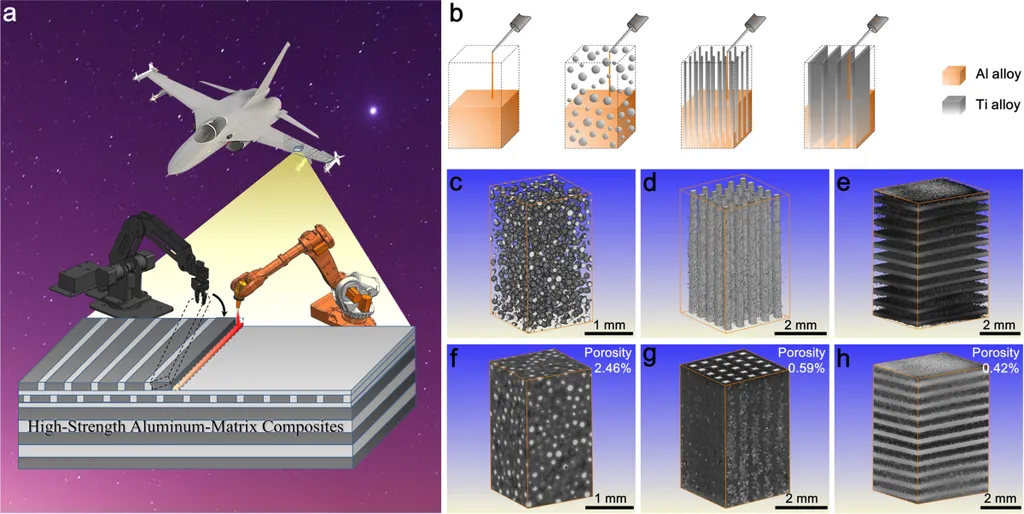In the pursuit of stronger, lighter, and more durable materials for the energy sector, researchers have made a significant stride forward. A recent study published in the Archives of Metallurgy and Materials, known in English as “Archives of Metallurgy and Materials,” delves into the microstructural intricacies of aluminum matrix composites reinforced with ultrafine titanium carbide (TiC) particles. The lead author, W. Maziarz from the Institute of Metallurgy and Materials Science at the Polish Academy of Sciences in Krakow, Poland, and his team have uncovered insights that could revolutionize the way we think about material design for high-performance applications.
The study focuses on Al/TiC in-situ cast composites, exploring the strengthening mechanisms through multiscale microstructural investigations. By examining composites containing 5 and 15 wt.% TiC, the researchers were able to elucidate the effects of particle number and size, grain refinement of the matrix, and lattice mismatch between the aluminum and TiC crystal lattices.
“Our findings indicate that the addition of 15 wt.% of TiC particles to the aluminum matrix significantly enhances mechanical properties and wear resistance, despite the intensified clustering process of TiC particles,” Maziarz explained. This discovery is particularly noteworthy for the energy sector, where materials are often subjected to extreme conditions and require exceptional durability.
The research employed a combination of light microscopy, scanning electron microscopy (SEM), and transmission electron microscopy (TEM) to conduct comprehensive microstructural investigations. These were supported by tensile tests, hardness measurements, and abrasive wear resistance evaluations, providing a holistic understanding of the material’s behavior.
The implications of this research are far-reaching. In the energy sector, where weight reduction and durability are paramount, the development of stronger and more wear-resistant materials can lead to more efficient and reliable systems. For instance, in the aerospace industry, lighter materials can contribute to fuel efficiency, while in the oil and gas sector, enhanced wear resistance can extend the lifespan of critical components.
Moreover, the insights gained from this study could pave the way for the design of new composite materials tailored to specific applications. By understanding the underlying mechanisms that govern the strength and wear resistance of Al/TiC composites, researchers can optimize material properties for a wide range of industrial uses.
As the energy sector continues to evolve, the demand for advanced materials that can withstand harsh environments and deliver superior performance will only grow. The work of Maziarz and his team represents a significant step forward in meeting this demand, offering valuable insights that could shape the future of material design and engineering.
In the words of Maziarz, “This research not only advances our understanding of Al/TiC composites but also opens up new possibilities for their application in high-performance sectors, including energy.” With such promising findings, the future of material science looks brighter than ever.

